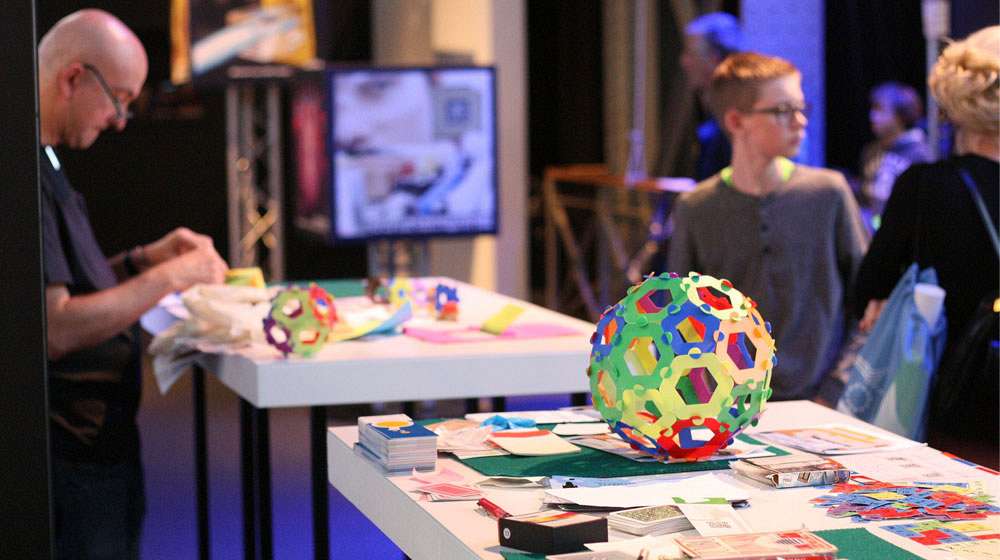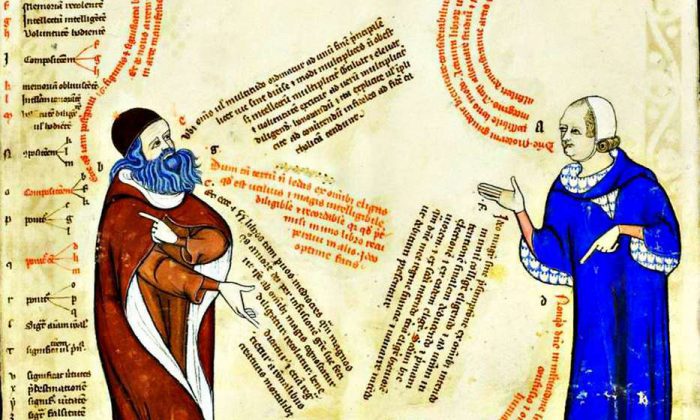Philosopher, mystic and visionary…. ‘Ramon Llull. The thinking machine’, en exhibition that explores the mind of this philosopher

The exhibition ‘Ramon Llull. The thinking machine’ is on at the Barcelona Centre of Contemporary Culture, and explores the influence of the Majorcan philosopher’s visionary work over the centuries. 700 years after his death, this exhibition shows the links between Llull and contemporary culture and how his method of knowledge is the forerunner of new information technologies.
By combining historical documentation and the more recent visions of artists inspired by Llull’s work, such as David Link, Ralf Baecker and Perejaume, the exhibition provides insights into surprising and unknown aspects of this philosopher’s thinking, and puts forward the view that ars combinatoria, the method of knowledge invested by Llull that combines letters and concepts, should be seen as a forerunner for current technology.
Other activities
During the exhibition’s duration, the CCCB has also organised different activities associated with its content, including:
-Cycle of debates, until 4 December.
-‘The thinking machine’ for families, offering a family-friendly space for reading, playing and being creative, until 11 December.
-Conference ‘Ramon Llull and the poetic dimension of reality’ with Amador Vega, on 29 September.
– Guided visit of the exhibition offered by the CCCB’s educational service, on 26 October.
-Presentation of the current state of the ‘Globàlium’ philosophical model, with Agustí Rochet, ‘Global interdisciplinary metanetworks. A collective thinking machine’, on 3 November.
– Artificial intelligence writing workshop, ‘What do machines think?’ by Fernando Cucchietti and Artur García, on 5 November.
– Round table: ‘The talking machine’, with Caterina Balcells, Núria Castell and Eduard Elias, on 17 November.
-Workshop ‘Mysteries of magic and illusionism related to Ramon Llull’, with Miquel Duran and Fernando Blasco, on 27 November.
Philosopher and visionary
Ramon Llull’s concept of reality was formed by the merging of philosophy, theology, science and politics; the system of thinking that he created, known as Ars magna, interlinks all the branches of knowledge of his time (astronomy, philosophy, theology, logic, medicine, law, etc.) and the language he used to express all this, the ars combinatoria, is the finest example of how to draw a connection between different things.
To reflect and cover all points of view, the exhibition contains works by Antoni Tàpies, Arnold Schönberg, Athanasius Kircher, Bernat de Lavinheta, David Link, Francesc Pujols, Giordano Bruno, Gottfried Wilhem Leibniz, Agrippa von Nettesheim, Italo Calvino, Jacint Verdaguer, Jean-Jacques Grandville, Jeongmoon Choi, Joan Desí, Johann Heinrich Alsted, John Cage, Jorge Oteiza, José Luis Alexanco, José María Yturralde, Josep M. Subirachs, Josep Maria Mestres Quadreny, Josep Palau i Fabre, Josep Soler, Juan de Herrera, Juan Eduardo Cirlot, Manfred Mohr, Manuel Barbadillo, Marius Schneider, Miquel Bestard, Moses ben Jacob Cordovero, Nikolaus Joachim Lehmann, Perejaume, Philipp Goldbach, Pietro Mainardi, Rafael Isasi, Ralf Baecker, Ramon Llull, Raymond Queneau, Razen, Rosa Leveroni, Salvador Dalí, Sebastián Izquierdo, Ruth Jarman and Joe Gerhardt, Valère Novarina, William Morris, Yehudá ha-Leví and Daniel V. Villamediana.

Watch this video of the exhibition’s curator, Amador Vega, doctor of philosophy, who talks about the contemporary aspects of Ramon Llull’s system of thinking and who assures us that “Llull thought that all knowledge is networked”.
